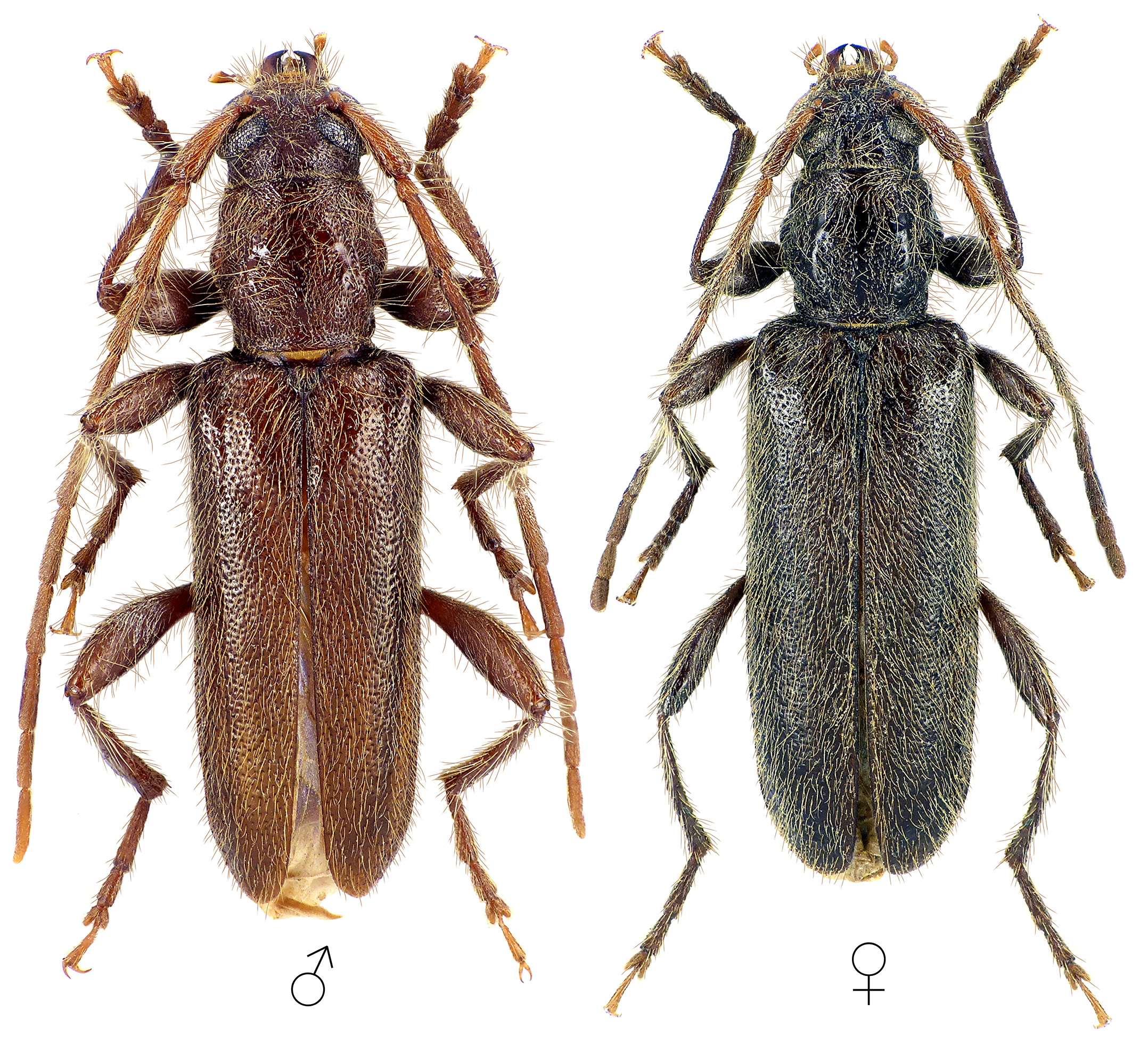Subfamilia: CERAMBYCINAE / Tribus: GRACILIINI

[Photo © David Navrátil, click on the picture for 4K resolution]
Lucasianus levaillantii, a rare species from South-West Mediterranean (Algeria, Morocco, France, Portugal, Spain), has been described from Oran environs (Algeria) as Cerambyx ? Levaillantii by Pierre Hippolyte Lucas in 1849 [▽]. The new genus for this interesting taxon, named Lucasianus in honor of the discoverer, was estabilished by Maurice Pic in 1891 [❖]. Larvae of this crepuscular species with summer-early autumn acivity develop in dead or dying branches of conifers, especially from Cupressaceae family. Local populations of this originally North-African species are known from the Iberian peninsula and South-France, where was species probably introduced together with ornamental Cupressaceae or wood in the early 20th century [✧].
Body length: 5 - 10 mm Life cycle: 2 - 3 years Adults in: June - October Host plant: polyphagous in conifers (Cedrus, Cupressus, Juniperus) Distribution: Algeria, Morocco, France, Portugal, Spain
The depicted beetles were reared from larvae found in dead Cupressus sempervirens in centre of town Torremolinos (N36°36.53′ W004°30.52′; 20 m a.s.l., Costa del Sol Occidental cormarca, Málaga province, Andalusia, Spain) in April 2024.Collected by our friend Matěj Čermák
[▽]
Lucas P.H.:
Histoire Naturelle des animaux articulés. Coléoptères.
In Exploration scientifique de l'Algérie pendant les années 1840, 1841, 1842. Sciences Physiques et Zoologie II. (Deuxième partie. Insectes) [1846] 2: 590pp, 1849. [download]
[❖]
Pic M.:
Faune Franco-algérienne (variétés).
Matériaux pour servir à l'étude des Longicornes 1 (1): 1-50, 1891. [download]
[✧]
Trócoli S.:
Actualización del catálogo de Longicornios de Marruecos / Actualisation du catalogue des Longicornes du Maroc (Parte III / Partie III : Cerambycidae : Cerambycinae).
Revue de l'Association Roussillonnaise d'Entomologie (R.A.R.E.) 28 (3): 143–185, 2019. [download]
| Subfamilia | Cerambycinae Latreille, 1802 |
| Tribus | Graciliini Mulsant, 1839 |
| Genus | Lucasianus Pic, 1891 |
| Species | Lucasianus levaillantii (Lucas, 1847) |
